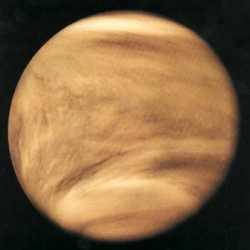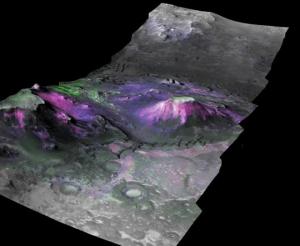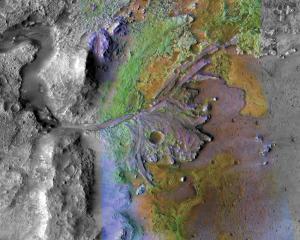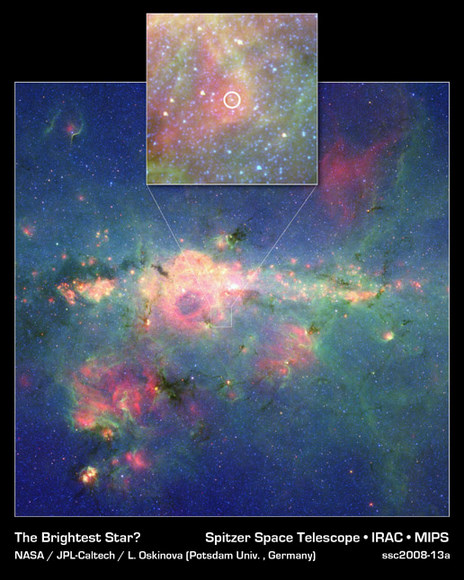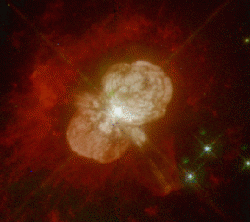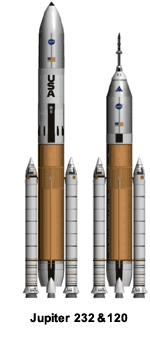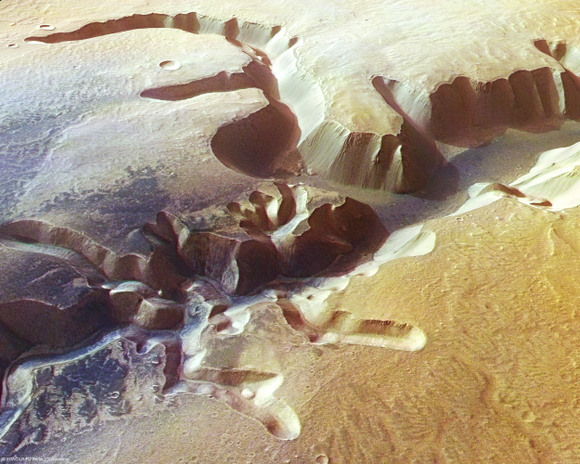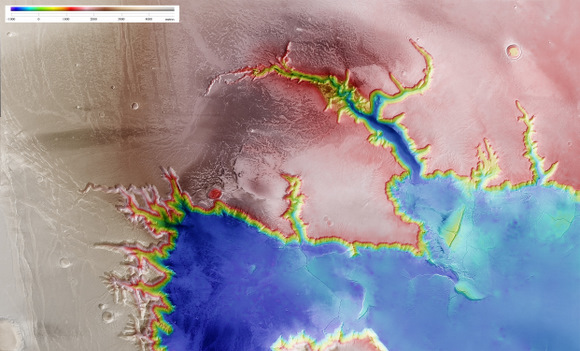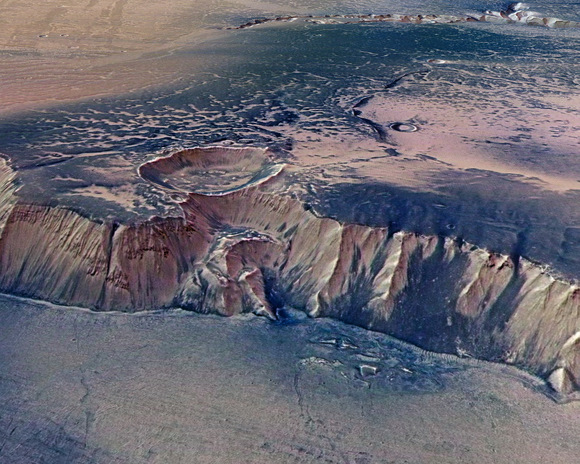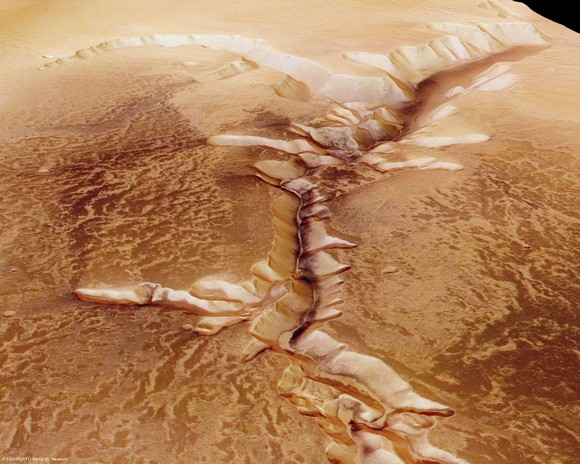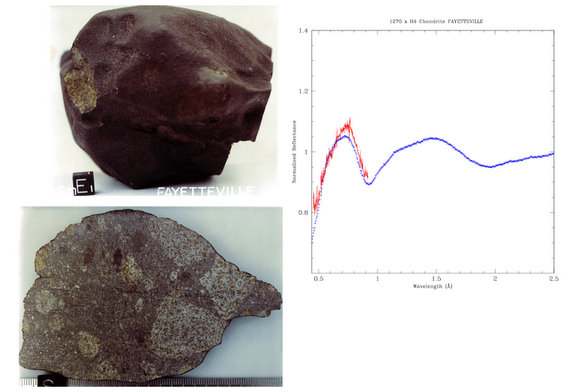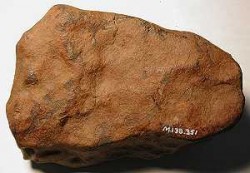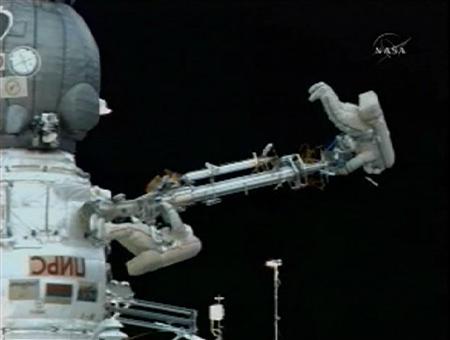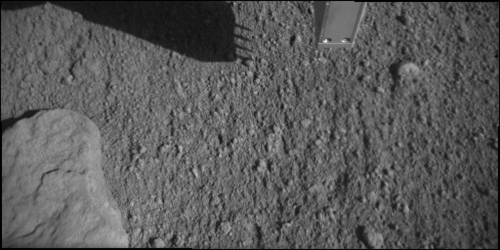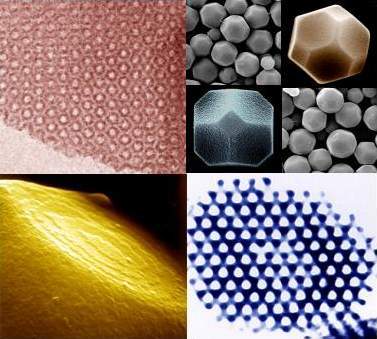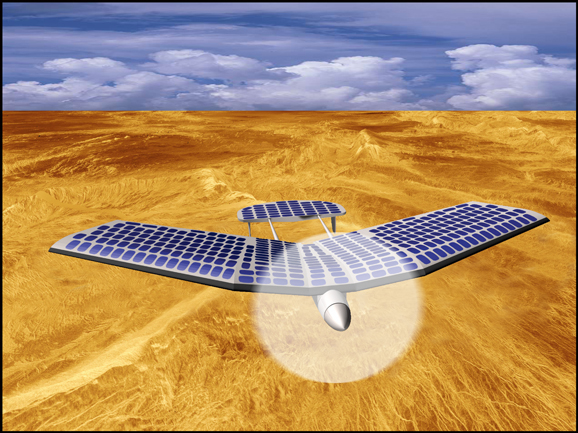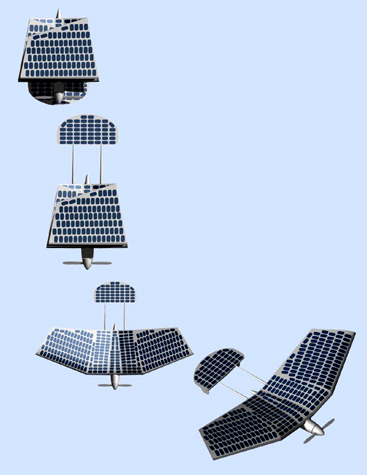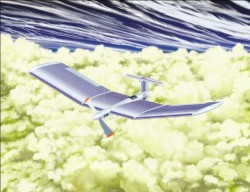Seemingly, people in the space community have a tendency to push the boundaries of thought about all the possibilities that await us in the universe. Case in point: Geoffrey Landis. Landis is a scientist at NASA’s Glenn Research Center who writes science fiction in his spare time. Last week Landis shared with us his ideas for using a solar powered airplane to study Venus.
This week, Landis goes a step farther (actually, several steps farther) with his ideas about colonizing Venus. Yes, Venus, our hot, greenhouse-effect-gone-mad neighboring planet with a crushing surface pressure that has doomed the few spacecraft that have attempted to reach the planet’s mysterious landscape. Landis knows Venus’ surface itself is pretty much out of the question for human habitation.
But up about 50 kilometers above the surface, Landis says the atmosphere of Venus is the most Earth-like environment, other than Earth itself, in the solar system. What Landis proposes is creating floating cities on Venus where people could live and work, as well as study the planet below.
“There’s been a lot of people who have been proposing space colonies, such as colonies that are in free space, separate from any planet,” said Landis. “And I said, well, if you’re thinking that far into the future why don’t we think of some more groundbreaking, or perhaps we should say atmosphere-breaking possibilities.”
50 km above the surface, Venus has air pressure of approximately 1 bar and temperatures in the 0°C to 50°C range, a quite comfortable environment for humans. Humans wouldn’t require pressurized suits when outside, but it wouldn’t quite be a shirtsleeves environment. We’d need air to breathe and protection from the sulfuric acid in the atmosphere.
In looking at Venus, the fact that struck Landis the most is that Earth’s atmosphere of nitrogen and oxygen would actually float in Venus’ atmosphere of carbon dioxide. “Because the atmosphere of Venus is CO2, the gases that we live in all the time, nitrogen and oxygen, would be a lifting gas,” he said. “On Earth, we know to get something to lift, you need something lighter than air. Well, on Venus, guess what? Our air is lighter than air, or at least lighter than the Venus atmosphere.”
So, create a bubble, fill it with Earth-like atmosphere, and it would float on Venus. “If you could just take the room you’re sitting in and replace the walls with something thinner, the room would float on Venus,” said Landis.
The biggest challenge would be using a substance resistant to sulfuric acid to form the outer layer of the bubble; ceramics or metal sulfates could possibly serve in this role, but of course, you’d want to be able to see outside, as well. “Just think of the great pictures you could get,” said Landis.
Asked if he has ever thought about terraforming Venus, Landis said, “Oh, yes, of course! That’s one of the reasons I started thinking about the floating cities on Venus. The more you look at Venus, the more you say, ‘oh my goodness, terraforming would be a really hard project.'”
Back in about 1962 when Carl Sagan first talked about the concept of terraforming Venus, it wasn’t known what a challenge Venus would be.
“They didn’t quite know how difficult Venus is, they didn’t know how thick the atmosphere was on Venus and how hot it was,” said Landis. “They knew it had a greenhouse effect, but they didn’t know how bad. But the more we look at the problems, the more we say, goodness, terraforming is a very difficult proposition.”
But Landis thinks Venus already has a very nice environment.
“What I like to say, the problem with Venus is if you define sea level as the place in the atmosphere where it’s the same as Earth, the place of “sea level” on Venus is just too far above the ground.”
While Landis’ plans for a solar powered airplane are a true possibility for an upcoming mission to Venus, his ideas about colonizing that planet are a little more speculative. “This is really just a thought exercise,” said Landis, “an exercise in imagination rather than something we’re likely to do in the near term. I don’t expect people will be building cities on Venus, at least probably not in this century.”
Anyone having visions of Bespin and Lando Calrissian from “The Empire Strikes Back”?
Maybe that should be “Landis” Calrissian.
More information about Geoffrey Landis.


